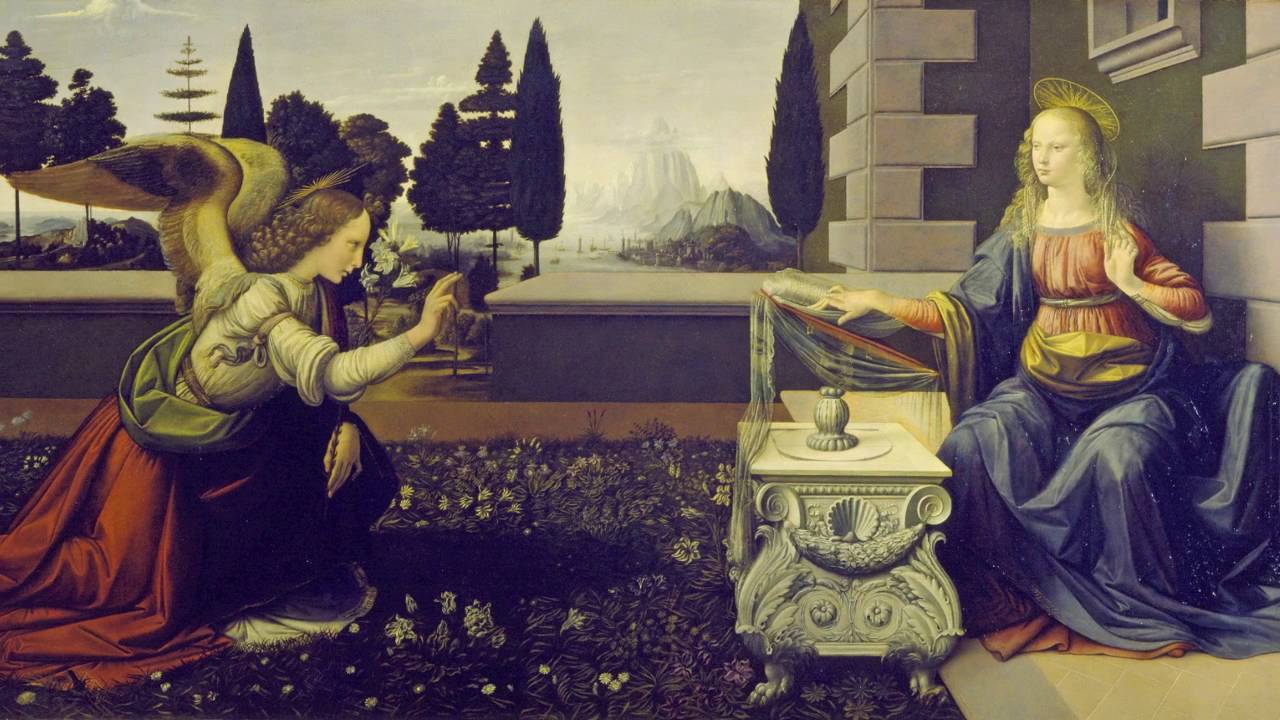
Robert Draws – Leonardo’s Annunciation is a beautiful and iconic work of art that depicts the moment when the angel Gabriel announces to the Virgin Mary that she will conceive the Son of God. This masterpiece is part of Leonardo da Vinci’s early works and is housed in the Uffizi Gallery in Florence, Italy. The painting showcases Leonardo’s exceptional skill and ability to blend realism with divine symbolism. As we dive deeper into this work, we explore the techniques, symbolism, and story behind one of the most renowned scenes in Christian art.
In Leonardo’s Annunciation, the angel Gabriel appears before Mary in a moment of divine revelation. Gabriel stands on the left, while Mary is positioned on the right. The scene is set in an open, outdoor space, giving a sense of natural light and realism. The figures are positioned in a way that emphasizes the connection between them. The angel appears to be delivering an important message, while Mary reacts with a sense of calm acceptance. The setting in the background is detailed, with a landscape that showcases Leonardo’s attention to nature and his commitment to portraying the natural world accurately.
The painting employs a technique known as “sfumato,” which Leonardo pioneered. This technique involves the softening of edges to create a more realistic, three-dimensional effect. The figures seem to emerge from the background as though they exist in the real world, rather than on a flat canvas. The lighting, shadows, and textures contribute to a sense of depth, making the scene appear lifelike. The use of this technique in Leonardo’s Annunciation elevates it beyond a mere religious image, turning it into a study of light and form.
Symbolism plays a significant role in Leonardo’s Annunciation. The figures in the painting represent both the spiritual and physical realms. The angel Gabriel, who appears as a youthful and graceful figure, represents divine intervention. His gesture conveys communication, with his hand outstretched toward Mary. This posture symbolizes the angel’s role as a messenger of God. The wings of Gabriel are delicately painted, highlighting his celestial nature and connection to the heavens.
Mary, on the other hand, is depicted in a humble yet serene manner. She wears simple robes, symbolizing her purity and humility. Her posture suggests a calm acceptance of the angel’s message. Her hands are positioned to receive the divine news, while her gaze is directed downward, contemplating the weight of what has been revealed to her. Consequently, her expression conveys both acceptance and understanding.
The background of the painting contains lush greenery, mountains, and a winding river. These elements reflect Leonardo’s fascination with nature. Moreover, they symbolize the connection between the divine and the earthly. The river, in particular, may represent the flow of life and the unfolding of God’s plan for humanity.
Leonardo’s mastery of light and perspective is evident in the Annunciation. The natural light that illuminates the figures adds depth and realism to the composition. The sunlight casts shadows on the figures, highlighting their three-dimensional forms. Leonardo carefully controls the lighting to emphasize the importance of the moment. This use of light enhances the divine nature of the scene, creating a sense of sanctity and importance.
The perspective in the painting also contributes to the overall feeling of realism. The background and the figures are placed in a way that suggests depth, with the landscape receding into the distance. This technique creates a sense of space and allows the viewer to feel as though they are witnessing the moment in person.
Leonardo’s Annunciation is an important work in the history of art. It marks a key moment in Leonardo’s development as an artist. The painting reflects his deep understanding of anatomy, light, and perspective. It also showcases his ability to blend the natural world with the divine, creating a sense of harmony between the two realms.
The Annunciation has had a lasting impact on artists and has influenced generations of painters. Leonardo’s attention to detail, realism, and use of light set a standard for future artists to follow. His work inspired countless artists, and his techniques were widely studied and adopted.